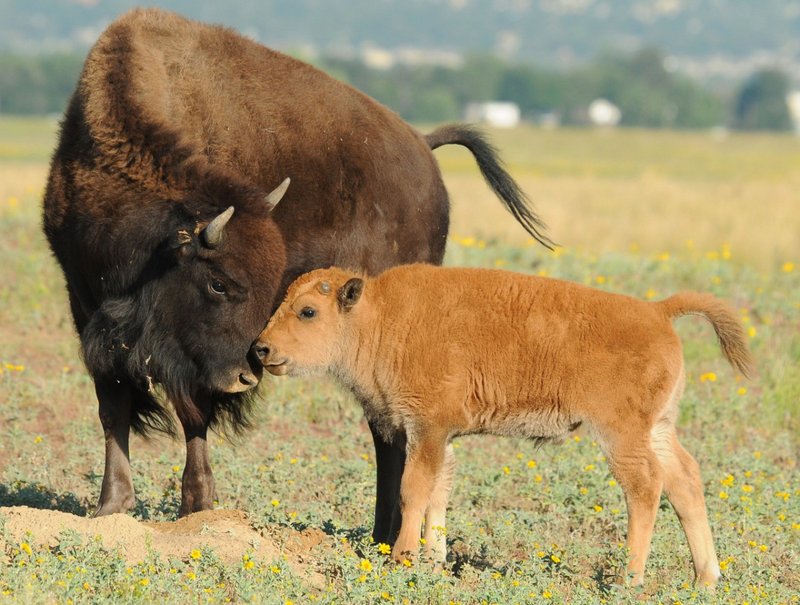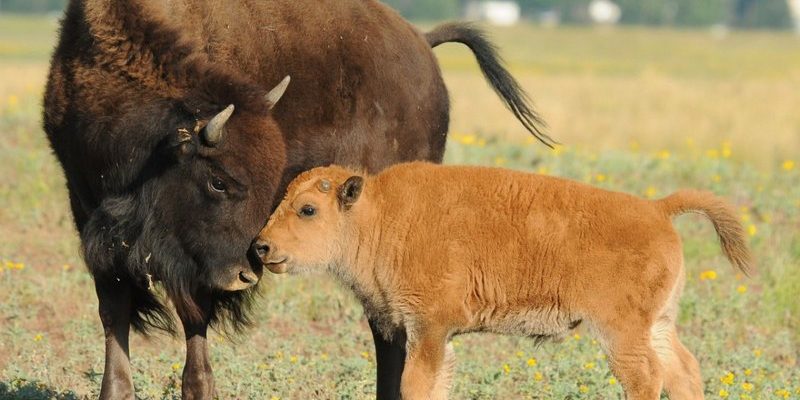
Imagine being wrapped in a cozy blanket on a chilly night. For bison, their thick, woolly coats do just that, providing warmth in freezing temperatures. They’ve got clever tricks up their sleeves (or, rather, fur) that help them find food, stay safe, and adapt to the wild, unpredictable landscapes of North America. In this article, we’ll dive deep into the fascinating ways American bison manage to thrive in harsh environments. You might be surprised at just how resilient these animals are!
The Thick Coat: Nature’s Insulation
One of the most striking features of the American bison is its thick fur coat. This isn’t just for looks; it plays a crucial role in their survival. The outer layer consists of long, shaggy hairs that help keep the wind and snow at bay. Beneath that, they have a soft inner layer that traps heat. It’s like nature’s very own thermal suit!
During winter months, temperatures can plummet. The bison’s coat becomes a life-saver, allowing them to conserve body heat while they move across icy landscapes. Interestingly, these animals can even tolerate extreme cold better than heat. When the sun comes out, they’ll wallow in mud or water to cool off, shedding their thick fur as needed. You might be wondering, “What happens if they can’t find food in deep snow?” Well, bison are surprisingly good at digging through snow with their large heads to uncover hidden grasses. Now that’s resourcefulness!
Foraging Skills: Finding Food When It’s Toughest
Bison are herbivores, which means their diet mainly includes grasses and some shrubs. During harsh winters, when food becomes scarce, they rely on their keen sense of smell and memory to locate food sources beneath the snow. They can sniff out vegetation buried under a foot of snow, which helps them stay nourished even when the ground appears barren.
Here’s a neat fact: bison move in herds, and this collective behavior can also aid in survival. When they stampede over snow, it creates trails that can help other herd members find food more easily. Additionally, bison are opportunistic grazers. They’ll vary their diet based on what’s available, adapting to their surroundings. So, if one type of grass is hard to find, they’ll seek out different plants instead. Talk about flexibility!
Social Structure: The Power of the Herd
American bison are highly social creatures that thrive in groups. Living in herds offers several survival benefits, especially in harsh environments. For one, the herd provides safety in numbers. Predators like wolves tend to target isolated individuals, so being part of a group can reduce the risk of attack.
Herd dynamics are fascinating. Typically, you’ll find female bison, along with their young, forming the core of the herd while adult males may either stay with the group or roam independently. Who knew a bison’s social life was so intricate? The herd also helps with foraging, keeping track of food sources, and creating paths through tough terrains, making it easier for all members to find sustenance.
Let’s also not forget about the nurturing aspect. Calves learn important survival skills from their mothers and other herd members, such as how to find food and where to seek shelter during harsh weather. It’s all about teamwork!
Migration Patterns: Following the Seasons
American bison are known for their migratory behavior, which is another clever adaptation for survival. These animals instinctively move to areas with milder climates and abundant food as seasons change. In the spring and summer, they typically roam more than in winter, seeking lush grasslands where they can graze freely.
Migration isn’t just about finding a new food source; it also helps the herd avoid tougher weather conditions. When the snow starts to fall, these bison know it’s time to head to areas where the grass is more accessible. They may travel long distances, sometimes covering up to 1,000 miles in a season. This journey is guided by instinct, as well as learned patterns established over generations. You might think of it as nature’s way of providing a roadmap for survival.
Water Sources: Staying Hydrated
While American bison are well-adapted to conserving water, they still need to drink regularly. They usually seek out rivers, lakes, and streams, especially during the warmer months. Bison have a remarkable ability to detect water sources from afar, which is crucial when temperatures soar.
In harsh environments, they’ve adapted to use less water than many other large mammals. For example, during the summer heat, they can derive moisture from the grasses they eat. This ability lets them survive in areas where water might be limited. Let me explain: while some animals might need to drink daily, bison can go a bit longer without a direct water source, making them masters of adaptation.
Resilience: A Remarkable Evolution
The journey of the American bison is one of resilience and survival. Despite facing threats from habitat loss, hunting, and climate change, these incredible animals have shown a remarkable capacity for recovery. Conservation efforts in recent decades have allowed their populations to rebound, though they are still closely monitored.
The bison’s adaptations are not merely physical; they also represent a broader connection to the ecosystems they inhabit. Their grazing patterns help shape grasslands, benefiting countless other species. When bison roam, they create paths that serve many other animals. Their presence maintains ecological balance, showing how intertwined their survival is with the health of their environment.
In essence, the American bison embodies resilience. Their ability to survive harsh conditions reminds us of the strength found in adaptability and social connections.
So, how do American bison survive in harsh environments? It boils down to their thick coats, foraging skills, social structures, migratory patterns, and remarkable resilience. These magnificent creatures have adapted over millennia to thrive in their habitats, turning challenges into triumphs.
As we appreciate these animals, let’s remember their role in our ecosystems and the importance of conserving their populations. After all, they’re not just surviving; they’re thriving, and that’s something we can all learn from. Whether you’re hiking in their natural habitats or simply enjoying stories about them, let’s celebrate the American bison for the remarkable survivors they are.

